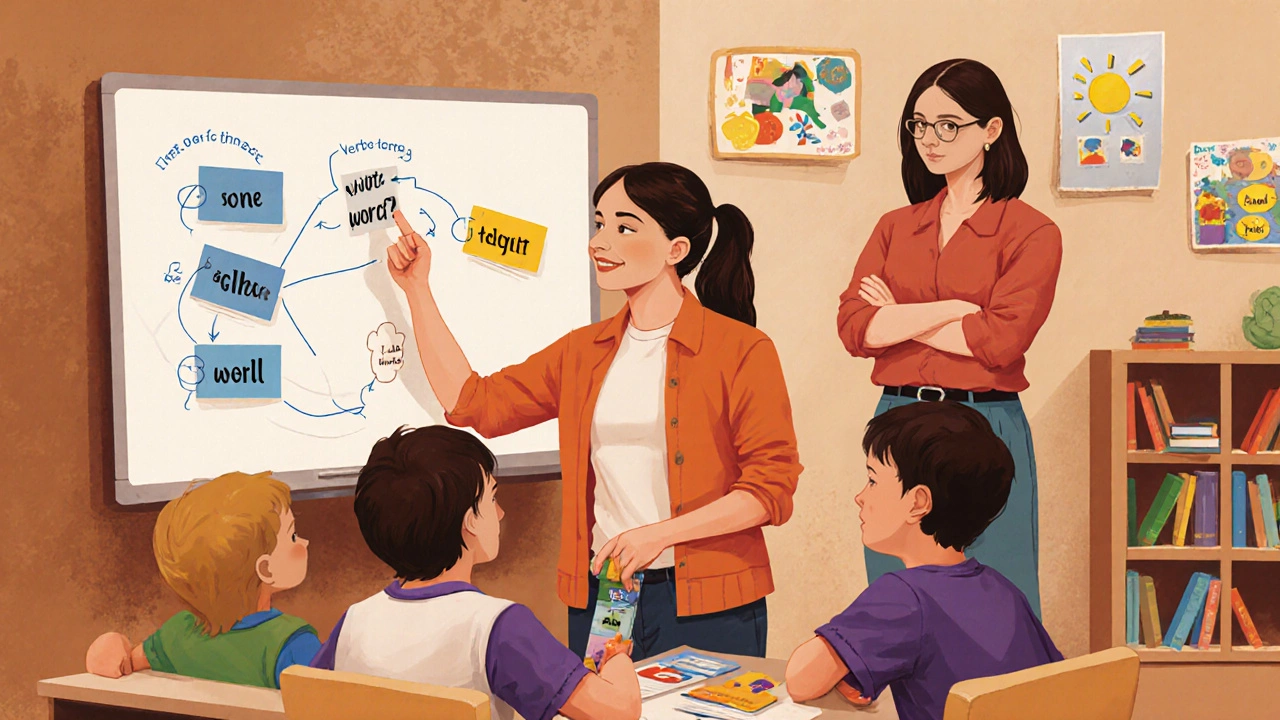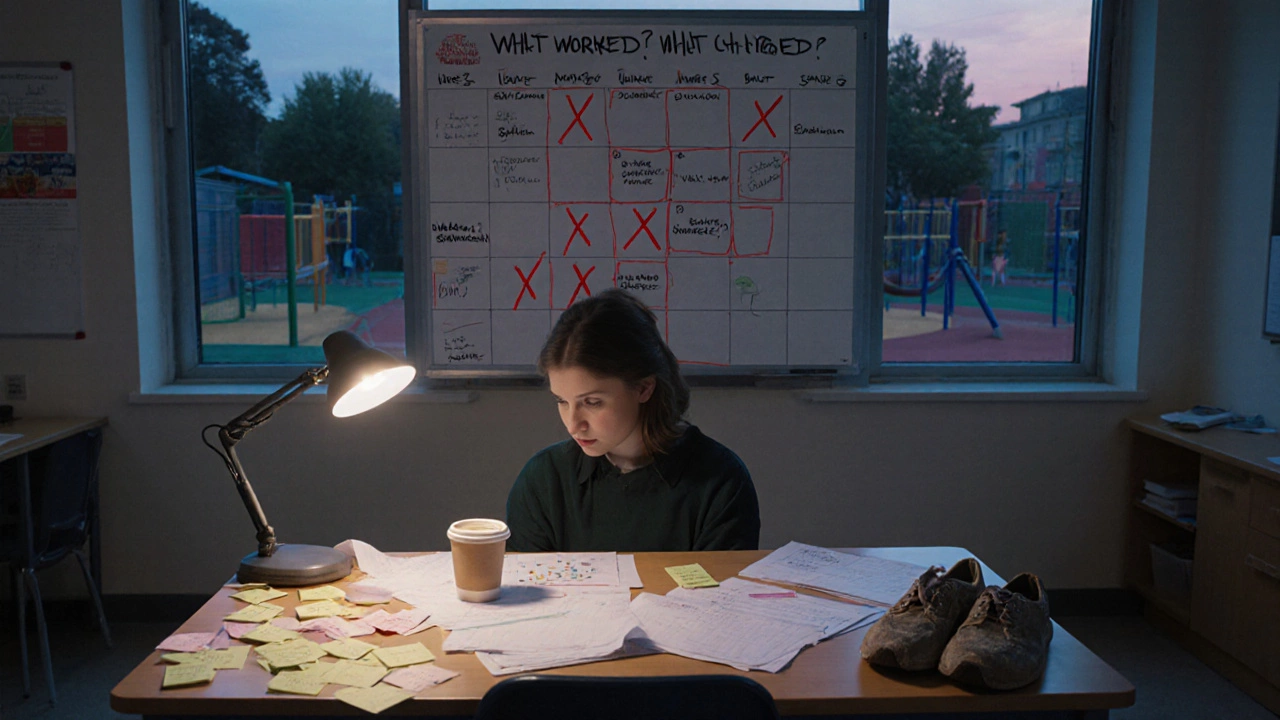
Ever wondered what a teacher trainee actually does all day? It’s not just sitting in lectures or grading papers. If you’re considering becoming a teacher, understanding the real work of a trainee can help you decide if this path is right for you. The role isn’t glamorous, but it’s deeply meaningful-and way more hands-on than most people expect.
Observing Experienced Teachers
Most teacher trainees start by watching. You’ll spend hours in classrooms, not as a student, but as a learner of teaching. You watch how a veteran teacher handles a disruptive student, how they explain fractions to a class of ten-year-olds, or how they transition between activities without losing momentum. These aren’t just passive observations. You’re taking notes on timing, tone, body language, and classroom management techniques. Many trainees keep a journal with entries like: "Used wait time after asking a question-five students raised hands," or "Rephrased instructions three times before half the class understood." This isn’t theory. It’s real-time data collection.
Planning Lessons (Even the Tiny Ones)
You won’t be designing full-term curriculums right away. But you’ll be asked to plan small lessons-maybe a 15-minute activity on synonyms, or a 20-minute warm-up game for multiplication facts. Your mentor will review your plan, often line by line. They’ll ask: "Why this sequence?" "What if a student doesn’t get it?" "How will you know if they learned it?" You’ll learn that a good lesson isn’t about filling time-it’s about creating moments where learning clicks. One trainee I spoke with spent three days rewriting a single worksheet on verb tenses because her mentor said, "It sounds like a textbook, not something a 12-year-old would care about." That’s the standard.
Teaching Small Groups
After a few weeks of observing, you’ll start teaching. Usually, it’s a small group of three to five students who need extra help. Maybe they’re struggling with reading fluency, or they’re shy and won’t speak up in class. You’ll run a 20-minute session, using flashcards, role-play, or digital tools. Your mentor watches from the back, taking notes. Afterward, you’ll debrief: "What worked? What felt forced?" You’ll realize that teaching isn’t about being the smartest person in the room-it’s about making the content accessible. One trainee told me she cried after her first session because the kids didn’t respond. Her mentor said, "They didn’t respond because you were talking at them. Try listening next time."

Managing Classroom Logistics
There’s a lot behind the scenes. You’ll help set up materials, distribute worksheets, take attendance, monitor lunch breaks, and assist with transitions between subjects. These tasks seem minor, but they’re where classroom rhythm is built. A trainee who forgets to check if the projector works before a video lesson disrupts the whole flow. Someone who doesn’t know where the spare pencils are wastes five minutes of learning time. You learn that teaching is 40% instruction and 60% organization. It’s the unglamorous stuff that keeps the engine running.
Working With Parents and Support Staff
You’ll sit in on parent-teacher meetings, not to speak, but to listen. You’ll hear how parents describe their child’s struggles at home, how they react to feedback, and how they want their child to be supported. You might help prepare reports for special education coordinators or assist speech therapists during sessions. You’ll start to see teaching as a team sport. The teacher doesn’t work alone. There are aides, counselors, psychologists, and community workers-all of whom play a role. Trainees who ignore this system often burn out. Those who learn to collaborate thrive.

Reflecting and Revising
Every week, you’ll write a reflection. Not a diary entry. A structured analysis: "What did I try? What was the outcome? What would I change?" You’ll compare your expectations with reality. Maybe you thought kids would love group work, but half the class got distracted. Or you assumed a visual aid would help, but it confused them. These reflections aren’t graded-they’re your growth engine. One trainee kept rewriting her lesson plans for a month because she realized she was teaching to her own memory of school, not to how today’s kids learn. That kind of honesty is rare. It’s also what makes a good teacher.
Dealing With the Emotional Load
Teacher trainees often aren’t prepared for how emotional this job gets. You’ll see kids who come to school hungry. You’ll hear stories about family stress. You’ll feel helpless when you can’t fix things. You’ll also have moments of pure joy-a student finally reads a full paragraph aloud, or writes their first poem. You’ll learn to hold both at the same time. The best trainees don’t try to be heroes. They learn to be steady. To show up, even when it’s hard. To care without burning out. That’s the quiet skill no lecture teaches.
What Happens After the Traineeship?
By the end of the program, most trainees have taught 50+ lessons, observed 100+ hours of instruction, and worked with at least 150 students. They’ve learned to read a room, adjust on the fly, and speak clearly under pressure. They’re not experts-but they’re no longer beginners. Many go on to full-time teaching. Others realize it’s not for them, and that’s okay too. The traineeship isn’t just a step toward certification. It’s a test of whether you can do this job, day after day, without losing your heart.
Do teacher trainees get paid?
In most cases, teacher trainees do not receive a salary during their training period. However, some programs-especially those linked to universities or government initiatives-offer stipends to cover basic expenses like transport or meals. In Australia, for example, some state-based programs provide a small allowance, but it’s not a wage. The focus is on learning, not earning, during this phase.
How long does a teacher traineeship last?
The length varies by country and program. In Australia, a typical traineeship lasts one full academic year, often running from February to November. Some graduate programs compress this into 12-16 weeks of full-time placement, but these are usually part of a longer degree. The key is that trainees spend at least 100-150 hours in real classrooms, spread across multiple grade levels and subjects.
Can I be a teacher trainee without a degree?
Generally, no. Most formal teacher training programs require at least a bachelor’s degree in any subject. Some countries offer alternative pathways-for example, a diploma in education after high school-but these are rare and often limited to early childhood or vocational settings. In Australia, you need a degree to qualify for teacher registration. The traineeship is the final practical step, not the entry point.
What’s the biggest mistake teacher trainees make?
Trying to be perfect. Many trainees spend hours planning lessons that never happen because they’re afraid of making a mistake. But teaching isn’t about flawless delivery-it’s about responsiveness. The best trainees learn to adapt. If a lesson flops, they adjust. If a student doesn’t get it, they try another way. Perfectionism kills progress. Real teaching grows from reflection, not from scripts.
Do I need to be good at public speaking to be a teacher trainee?
Not at all. Many great teachers are quiet, calm, and deliberate. Public speaking skills help, but they’re not required. What matters more is clarity, patience, and the ability to connect. A trainee who speaks softly but listens well often has more impact than someone who talks loudly but doesn’t hear the students. Teaching is a conversation, not a performance.
